3 way passive crossover design – using XSim
How to make a 3 way crossover?
Making a 3 way passive crossover design is pretty challenging. While a 2 way design is pretty straightforward, a 3 way crossover is several times more difficult to pull off. On the bright side, we do have intuitive computer software to help us out. XSim is one of my favorite apps for designing crossovers, and it’s completely free. In conclusion, I will show you how to use XSim to make a 3 way passive crossover design.
Methodology
First of all, let me introduce you to the device under test. Which is a 3 way floorstander using the following drivers (Amazon affiliate paid links) :
- Tweeter – Dayton Audio DC28F-8
- Midrange – Dayton Audio RS125-8
- 2 x Woofer – Dayton Audio SD215A-88
But before we do anything, we need the frequency response and the impedance measurement files. Also, we need to calculate the acoustic offset of the drivers. Here are some links to help you out :
- Speaker acoustic center – How to find it
- ZMA impedance file – how to make one
- How to make a FRD file
Now that I have refreshed your memory, all you need to do is to create your FRD and ZMA files for each driver and calculate the acoustic offset between the drivers. When you are doing the frequency measurements, just do a gated far field measurement. You don’t need to do nearfield measurements. Why? Because it introduces phase errors when splicing nearfield with far field response. In addition, when you are designing a crossover, you don’t manipulate the lowest octaves. You just let the bass driver naturally roll off. It’s nice to have the whole response on the chart, but you can do it just as well without. As a result, we don’t need that portion of the frequency response (20 – 200 Hz), because we don’t alter it in any way in our 3 way passive crossover design.
3 way passive crossover design in XSim
As shown in the acoustic center article, place 3 speakers in parallel. Load the FRD and ZMA files for each driver. Apply the Hilbert Transform for each one. Apply the acoustical offset for the drivers which demand such effect. After you have done all of this, your board should look like this :
Next thing to do is to add some components to the circuit. Pro tip : use space to rotate components. A recommended place to start is to add 2nd order filters for each speaker, and then go from there.
- 2nd order low pass for woofer
- 2nd order bandpass for midrange. Which is a low pass and high pass added together.
- For the tweeter use a 2nd order high pass. Also, add a resistor to play with its value. Most of the time the tweeter is way more efficient compared to the rest of the drivers, and this resistor lowers its output.
Make sure all of the curves are showing on the frequency response chart. For the moment the combined response (blue line) is a mess. We will work on that. Another thing I would like to point out is that our chart extends only down to 100 Hz (this can be changed in the menu). I did this because we made gated far-field measurements of the drivers. As a result, the response is accurate 200 Hz and above. Bear this in mind, that the response between 100-200 Hz is not a good representation of reality. Let’s get to tinkering.
Woofer – midrange crossover point
First, we want to blend the woofer with the mid-range. Before we do anything, I noticed that the tweeter extends to 1 kHz and we need to address that. Decrease the value of the capacitor on the tweeter side to 1 uF. This will make sure that the tweeter doesn’t stick its nose into the lower octaves, where it doesn’t belong.
Just above, I gave some indications on which components to tinker with for achieving a good frequency summation between the woofer and the midrange. Also, keep in mind a good crossover point between the two. Since it’s a 3-way speaker, anything between 200-1000 Hz would seem a fair choice. So start fiddling with the components and try to reach your best response.
Because we didn’t include the nearfield measurement in our FRD files, you will have to imagine that the response continues flat from 250 Hz and down. It actually rolls-off at around 50-60 Hz. So that looks pretty flat up until 1 kHz where we get a huge bump. According to the manufacturer specifications, the midrange has a flat response. However, we got this annoying bump. Since our speaker cabinet has rough, right angle edges and the speakers are not offset on the baffle, we have a nasty case of edge diffraction.
How to design loudspeakers - video courses
The hump is not near the crossover point and we cannot alter the slopes of the crossover to “cheat” this hump into disappearing where the 2 drivers meet. Instead, we will fix this issue later. When making a 3 way passive crossover design, you need to take care of the overall linearity, not just about crossover points. Speaking of which, the crossover point is at 460 Hz, where the 2 slopes intersect.
Mid-range – tweeter crossover point
The crossover point between the midrange and the tweeter is a bit more serious, because you can burnout the tweeter. But since this is a 3 way passive crossover design, there should be no problems in setting the crossover point a bit higher. So, something between 3 – 5k should be appropriate.
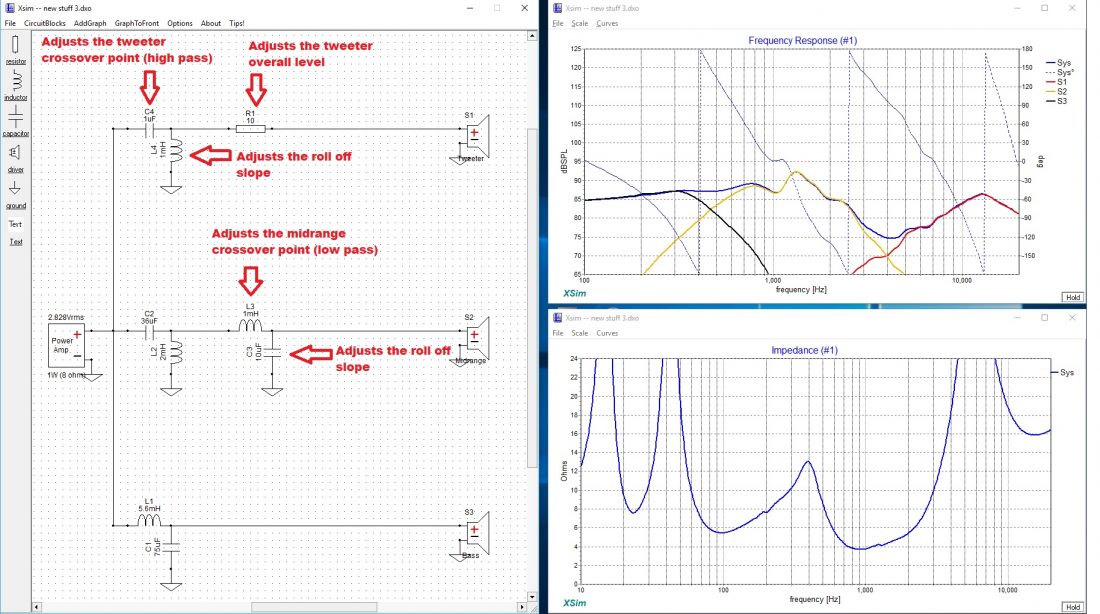 Fiddle with the components shown above and try to reach a nice integration between the tweeter and the midrange. In addition, keep in mind the crossover point, because the tweeter extends quite low with no intervention.
Fiddle with the components shown above and try to reach a nice integration between the tweeter and the midrange. In addition, keep in mind the crossover point, because the tweeter extends quite low with no intervention.
Don’t get to carried away with getting the response ruler flat because we have to fine tune everything anyway. As a result, when tinkering with one component, it can have minor effects in areas where you don’t expect.
Notch filter and fine tuning
We got to implement a notch filter on the mid-range side to get rid of that hump in the frequency response. After that, we will fine tune all the components until we get a flat response.
I can consider the crossover finished. The things that happened in the meantime :
- Added the notch filter on the midrange, to kill the hump.
- Reversed the polarity of the tweeter. You can do that to any driver as long as it’s in your advantage.
- Added a resistor in series with the parallel inductor on the tweeter side for better response shaping.
- Fiddle with all of the components till the response is close to flat.
I turned off the speaker curves to clearly observe the summed response. The speakers are not perfectly in phase. Many people look for that deep null at the crossover point when reversing the polarity of the midrange driver. You can do that by choosing asymmetrical crossover slopes to alter the phase shift and hope that the phases will match. I can tell you that I tried many combinations and didn’t quite got a satisfactory result. As a result a ladder delay network needs to be implemented and it will increase the cost of the crossover by quite some margin. I’m looking to keep the crossover price down, so I’m happy with just the flat response.
Impedance
When doing a 3 way passive crossover design, impedance is also a factor. You need to keep an eye on that chart. Make sure it doesn’t dip too much under 4 ohms. On our graph it does dip at 1100 Hz. However, it’s on a narrow frequency band, and it’s on a high frequency (1 kHz), which is easy on the amplifier. Anyway, if you have a cheap amp and cannot handle this 3 Ohm load, you can increase the value of the notch filter resistor to keep this dip in check. However, the hump in frequency response we tried to kill, will slowly appear as you increase the value of the resistor.
Conclusion
It’s nice to have software like XSim. Even if you don’t know what you are doing, you can try stuff and see what happens. As you can see in our example, we started with a 2nd order topology on all drivers and we finished exactly as we started. But you can add more components to increase the order of the crossover if necessary. In a 2-way setup, most likely, the woofer only need 1st order filter, so less components. You need to adapt depending on your project.
References
- Image source : link.

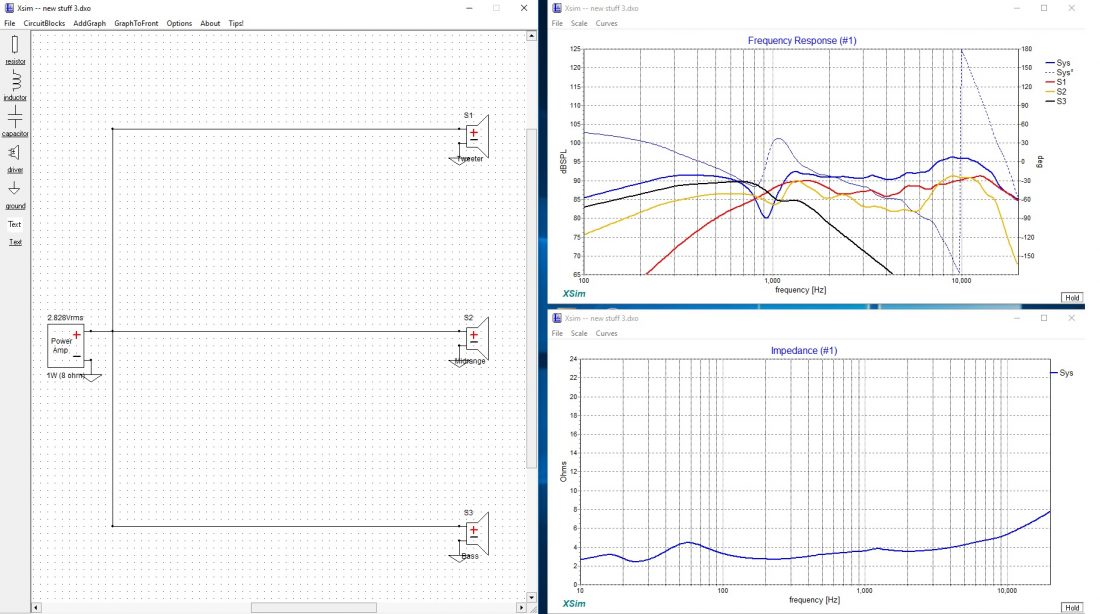
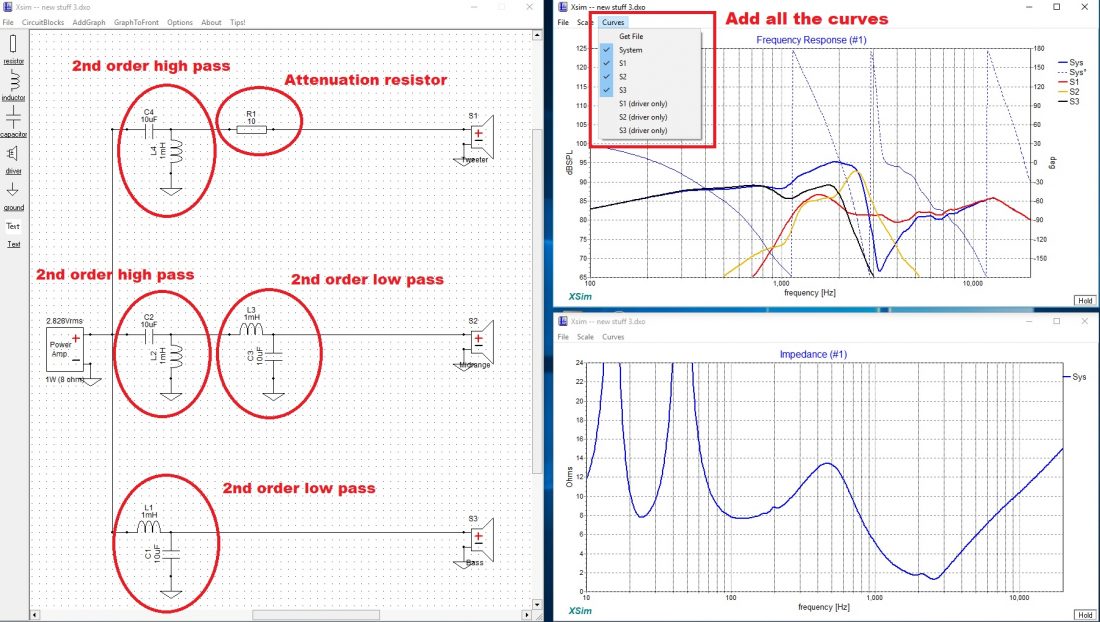
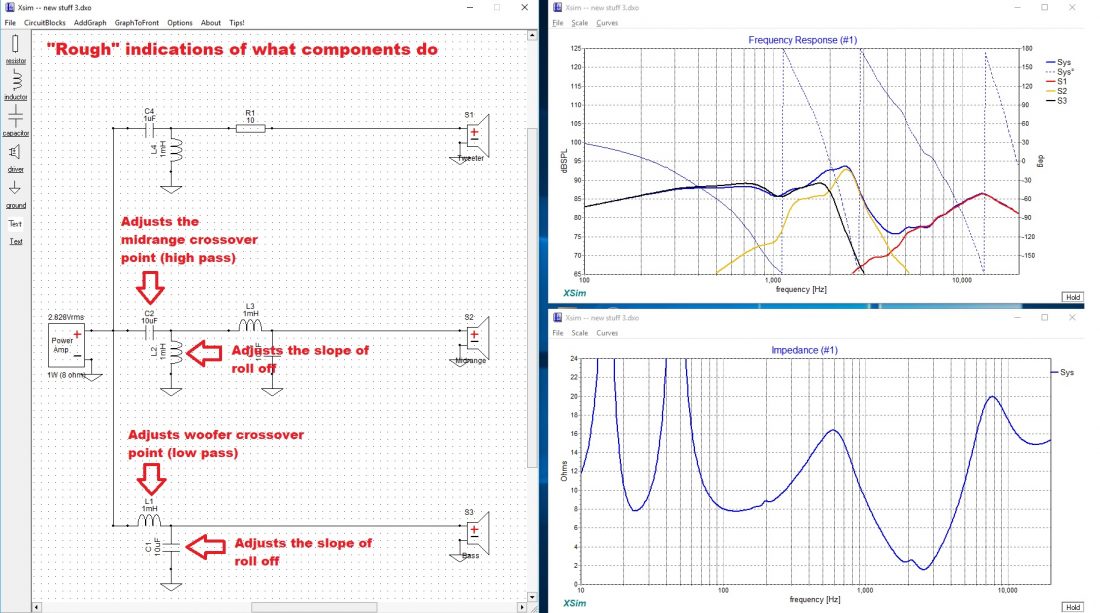

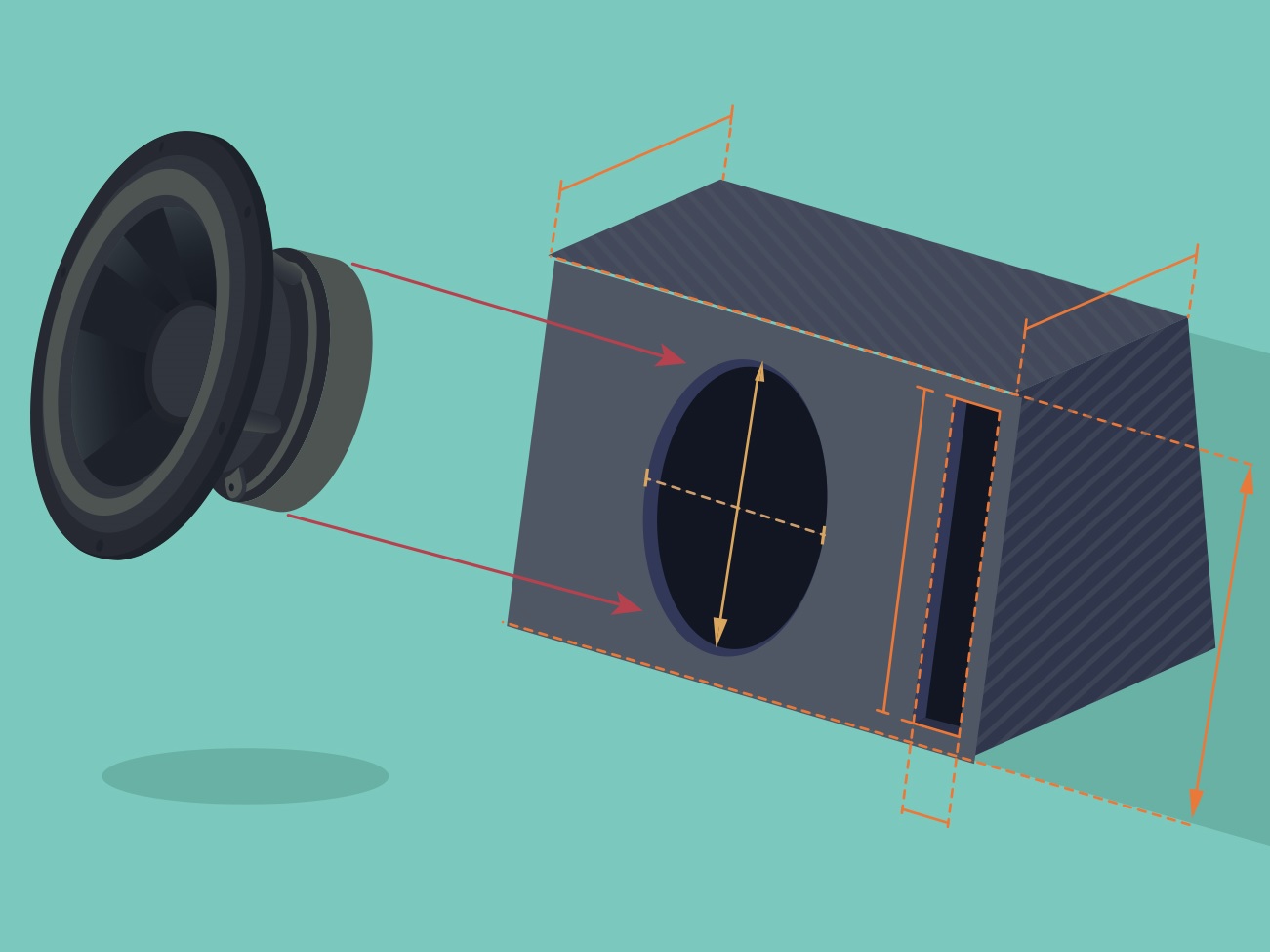


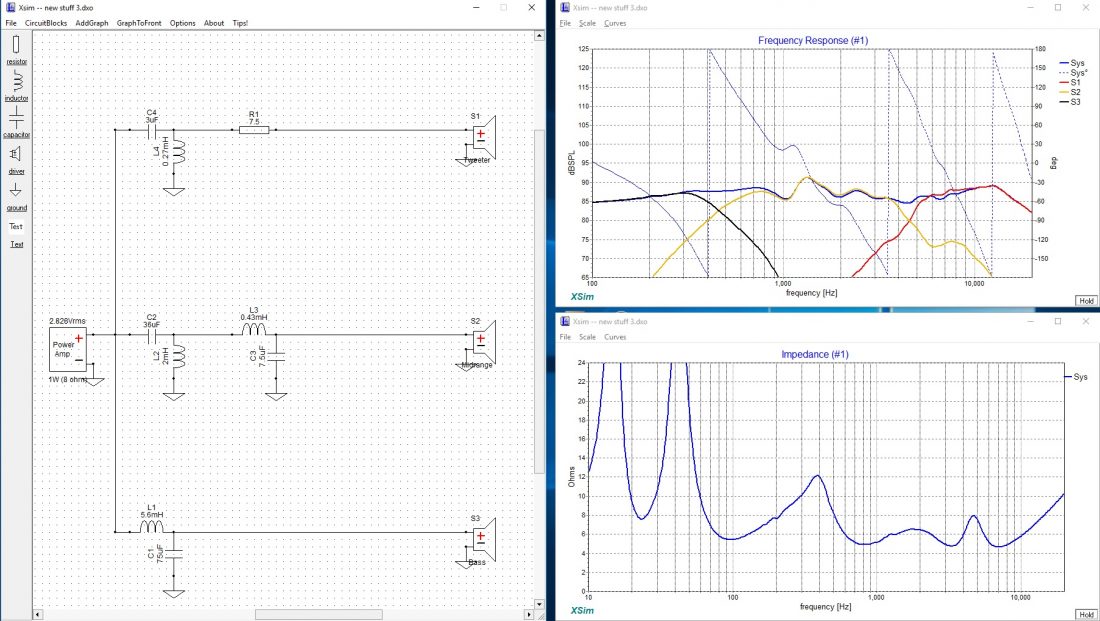
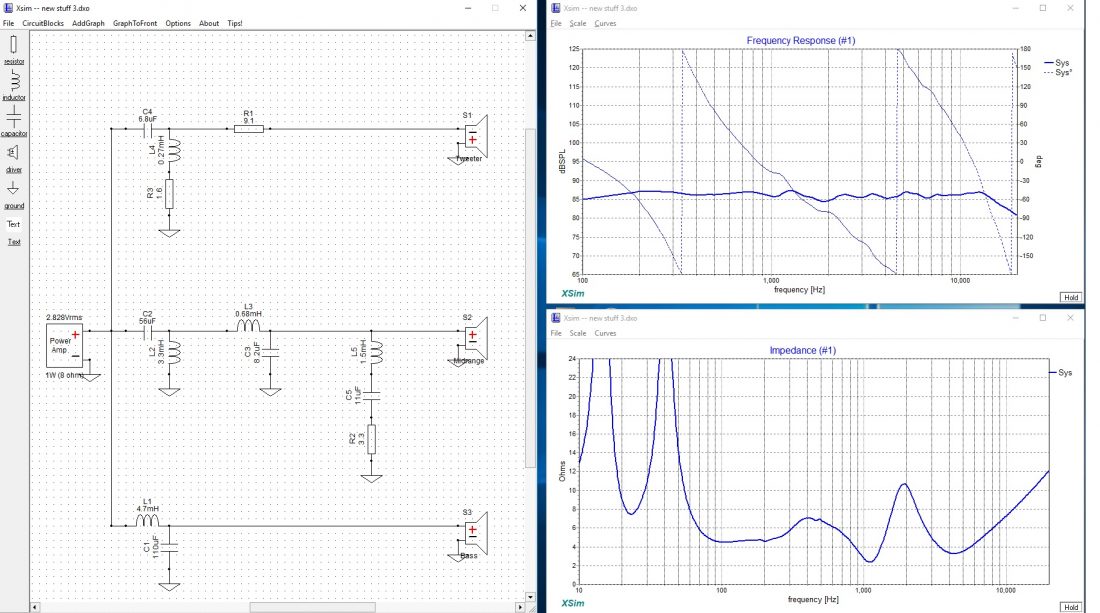

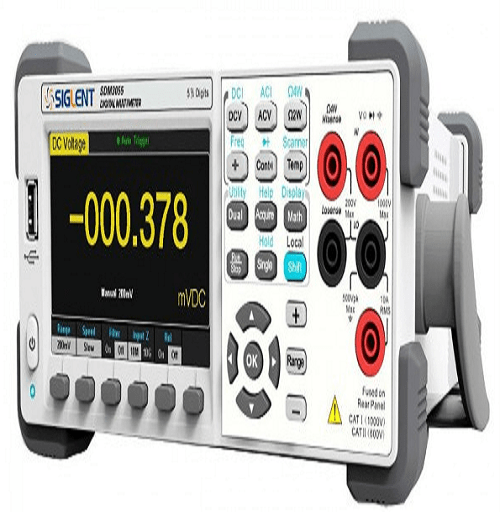




16 comments
Thank you for sharing this article. This is what I am looking for. very nice and informative and please keep posting the amazing article like this.
and what about topology if the linkwitz riley is used
Linkwitz Riley is just a fancy way of saying that your 2 response curves sum-up flat and the crossover point is -6 dB below linear response. When you are using crossover design software you care less about the topology and focus on the actual frequency/phase response.
Hello,
Do we need to match the impedance of a tweeter & woofer? eg: 8 ohms
if they are different – eg tweeter is 14 ohms while the woofer is 8 ohms – there is difference in how power is distributed bet ween the two drivers . with bulk of the power going to the driver with the Lower impedance.
How do we equalize this – as the tweeters volume will be lower. lets assume the drivers have the same sensitivity.
thanks & regards
Even if you assume that they have the same sensitivity, tweeters pretty much get a +6 dB from baffle diffraction. Anyway, to keep it simple, you basically add a series resistor to the louder driver. The size of the resistor depends on how loud the difference is.
What is the difference between the system phase plots in the Response and Impedance curves?
Thnx.
Well one is electrical phase and the other is acoustical phase which is dependent on position as well. The phase in the frequency response plots is the one you should look at.
what if i would combine 3 speaker drivers having different impedance.woofer(40hms),mid(8 ohms) and tweeter 8(ohms)
What would be the impedance that my amplifier may see after the crossover.thanks
It’s not that simple. The impedance is actually a list of values depending on frequency. When you see something like 4 Ohms, that is actually the mean value and quite close to the minimum impedance value of that system. For example, a 4 Ohm speaker will have an impedance ranging from 3.2 to 50 ohms depending on frequency. Furthermore, adding inductors, capacitors and resistors (crossover components) into the mix, will vary impedance even more. So, without crossover design software and impedance plots of the drivers, you can’t really know.
Where the hell is the XSim website to purchase the latest version? I only have the free version and have tried to search for the XSim website to give them money for the purchase version. Google does not deliver any links to the XSim website. XSim needs to make a link to their website show up somewhere.
There isn’t any paid version of XSim. You can download the app here : http://libinst.com/Xsim/XSimSetup.exe
Hi? Hoping you are all well. I have designed a 3 way crossover with 2 woofers, mid and one tweeter. I have noticed the impedance curve goes soo low (0.81ohms at 1.18Khz) How can I increase this value? Or will an amp able to handle such a low figure (Denon X4500h)
That is a result of your crossover design. You need to change your design, there isn’t a specific solution. And yes, it’s a problem, most likely it will shut down any amp.
Can XSim produce the step and pulse sound wave responses? (Assuming linear drivers).
This as a way to check positive phase accuracy/behavior.
XSim does offer impulse and step response graphs, yes.
How do you figure out what component values to use with a notch filter? Is there a good notch filter design app? Does xsim have an easy way to include notch filters to your design?
I don’t understand how to design notch filters at all.